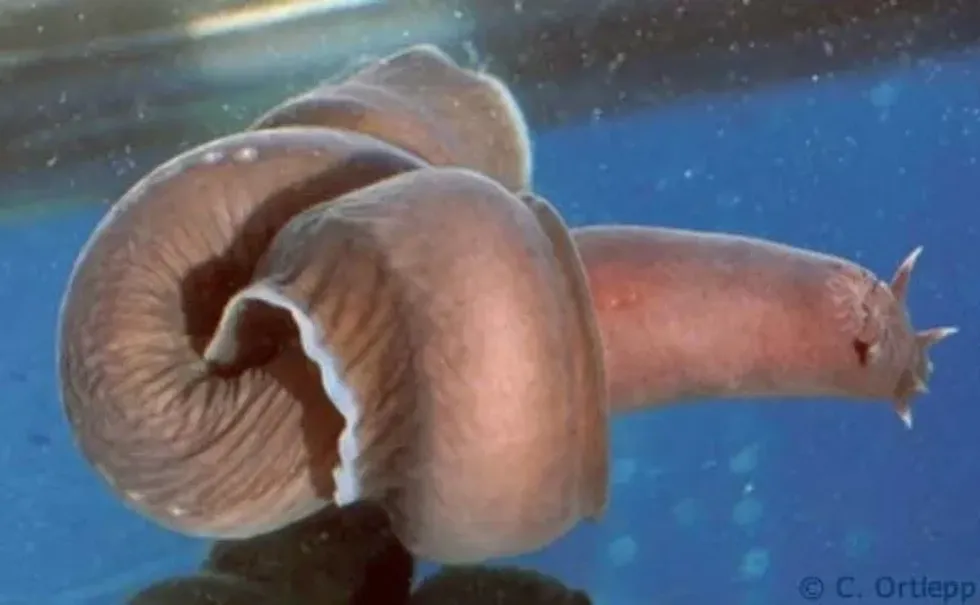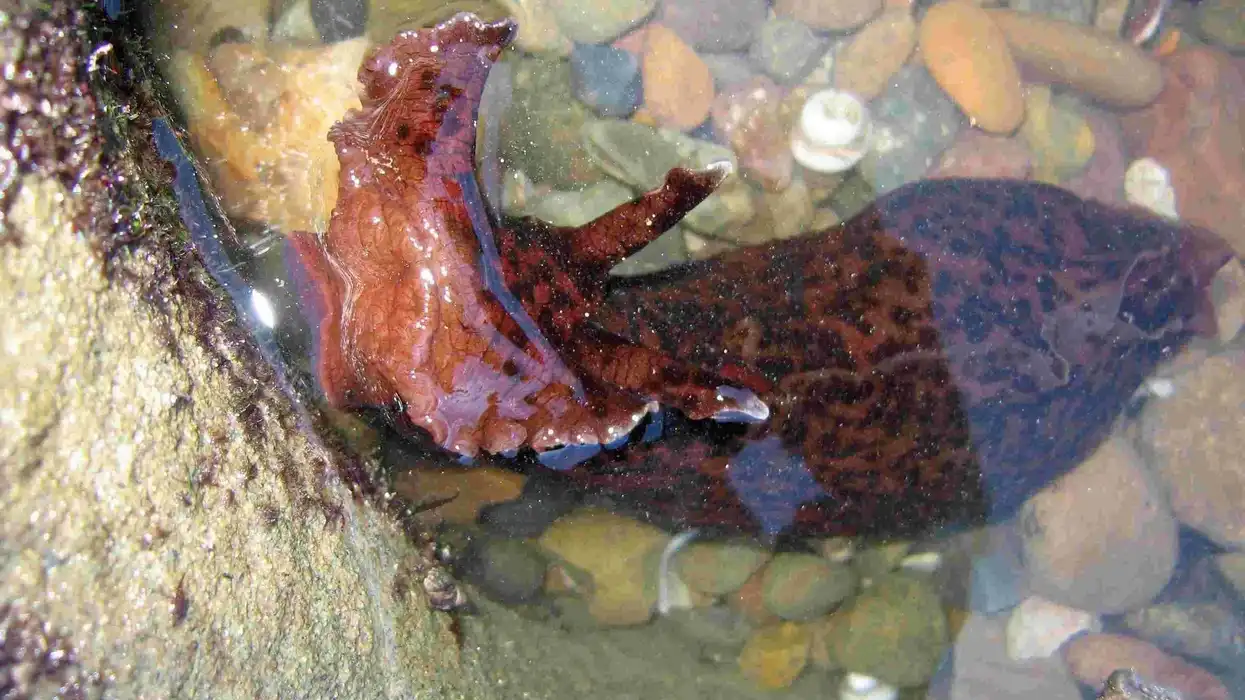Do you want to discover a fish that does not look like a fish and has a history dating to 330 million years back? Meet the Pacific hagfish, one of the most primitive creatures from the craniate group and an essential research topic in marine biology.
They have evolved very little in the last 330 million years, as per fossil studies. These hagfishes are prolific producers of slims for their defense, and they can quickly fill up a seven-liter bucket in minutes with their slime.
The hagfishes are called as the ugliest of the species. Hence the third Wednesday in October is observed as hagfish day to create awareness about these hagfishes. The message given is to encourage people to look beyond the exteriors of the hagfishes and appreciate these fishes for their evolution over a considerable period.
The marine adventure is only going to be more adventurous as we move on. So please do check our other exciting content right here on monkfish and rockfish.
Pacific Hagfish Interesting Facts
What type of animal is a Pacific hagfish?
Pacific hagfishes are one of the 60 species of the hagfish family. They are also known as slime eels though they are not eels.
Slime eels refer to their resemblance to eels and the enormous amount of slime created by them as a defense mechanism. They lack jaws with their mouth always open and bear a resemblance to fossils of fish found millions of years ago.
What class of animal does a Pacific hagfish belong to?
The Pacific hagfish belongs to the class Myxini. The animals of this class are unique as they have a partial skull with an absence of vertebrae. Their skeleton is boneless and is made up of cartilage. Their jaws are absent, and the mouth has a tongue with rasps that help to tear the food like the invertebrates down.
How many Pacific hagfishes are there in the world?
There is limited information on the population count of Pacific hagfish ( Eptatretus stoutii). However, there is information on hagfishes being abundantly available in their habitat range. In addition, their population with 15,000 hagfishes has been discovered in smaller areas which indicates the message that these creatures have a flourishing life throughout their range.
Where does a Pacific hagfish live?
The Pacific hagfishes are found in the cold marine waters on the Eastern side of the North Pacific Ocean ecosystems ranging from Canada to Mexico.
What is a Pacific hagfish's habitat?
The preferred habitat for these hagfishes is the mesopelagic to abyssal regions in the Pacific Ocean. They live in fine silt, clay bottoms of continental shelves, or muddy sea floors. The depth range is 52.5-3169.3 ft (16-966 m).
Who do Pacific hagfish live with?
These hagfishes live in colonial groups. The animals in such site colonies live close to one another.
How long does a Pacific hagfish live?
These slime eels have a life span of 40 years in the wild, whereas, in captivity, they only live for 17 years. Thus, their life is shortened in captivity.
How do they reproduce?
External fertilization is a distinct feature of reproduction in these marine animals. The females lay 28 eggs on average in shallow waters, and when these eggs are fertilized, they are carried around these females.
One unique thing in egg development is that the smaller egg batches do not grow until the more giant eggs have developed completely. The larval stage is not seen in these hagfishes.
Young ones, or hatchlings, are hermaphroditic, bearing both sex organs. Later in life, they become either a male or a female at various maturation stages, and the sex can also differ based on the season as a response to population pressures.
What is their conservation status?
The IUCN Red List classifies all the Pacific hagfishes in the Data Deficient range. However, the inshore hagfish is listed on the IUCN Red List as Near Threatened.
Pacific Hagfish Fun Facts
What do Pacific hagfish look like?

Their body is tubular and long, very similar to an eel. They have a pointed snout, a small head, and four pairs of barbels around the mouth. The mouths are mostly agape, and they have rudimentary eyes with poor vision.
Their fins form long fin folds that stretch from the gill pore to the anus. These hagfishes have 10 -14 gill pores; all placed anteriorly. The mouth has short sensitive tentacles.
Their tongue has a pair of rasps that assists in tearing and pulling. The skin pores run the length of their lateral line, which helps in ejecting the slime from the body. Their colorations can be dark brown, brownish-red with tints of purple or blue.
How cute are they?
These hagfish species, with their boneless body and slimy appearance, may not appeal to the eyes. However, they are not dangerous to humans.
How do they communicate?
These hagfish species have no vision but have a highly developed sense of smell and taste. The Schreiner organs, which are similar to taste buds, are found extensively on the epidermis of the hagfishes.
These organs help these hagfishes to detect their prey even in the dark and muddy habitats. In addition, these hagfishes are also blessed with highly effective olfactory organs for the smell. The ability to smell better helps them close in on their meal.
How big is a Pacific hagfish?
Pacific hagfish, Eptatretus stoutii, can grow as long as 25 in (63 cm) in length. They are half the size of a rainbow trout that grows a length of 45 in (114 cm).
How fast can a Pacific hagfish swim?
The exact speed of these hagfish species is unknown. However, it is observed that they swim slowly on the ocean floor in a snake-like manner. Nevertheless, it can catch up with some occasional speed bursts. Their swimming is based on undulatory waves of high amplitude.
How much does a Pacific hagfish weigh?
The Eptatretus stoutii weighs 1.7 - 3 lb (0.8 to 1.4 kg ). Thus, they are six times smaller than the Pacific cod, weighing up to 26 lb (12 kg ).
What are the male and female names of the species?
The male and female of the species are known as male Pacific hagfish and female Pacific hagfish.
What would you call a baby Pacific hagfish?
The baby Pacific hagfishes are called hatchlings. This is because these fishes do not have larval stages of development, and the egg hatches directly into young ones that are similar morphologically to the adults.
What do they eat?
The food for Pacific hagfish, Eptatretus stoutii, is polychaete worms and invertebrates from the seafloor like shrimps, cephalopods, and hermit crabs. They are carnivores and scavengers of the deep ocean. As scavengers, they have been observed feeding on the whale carcass.
They are predated by harbor seals, sablefish, and humans. They also become a food source for many seabirds, fishes, and seals.
Are they rare?
These hagfish species are abundantly found in their habitat region; hence they are not rare. The NOAA fisheries have records that approximately five million pounds of meat of these hagfish is consumed in Korea every year.
Would they make a good pet?
As these are bottom dwellers in the ocean and great producers of mucousy slime, they are not preferred to be kept as pets.
Did you know...
The body of the Pacific hagfish is capable of absorbing amino acids and other nutrients.
The skin of these species of hagfish is popular in making clothing, belts, and accessories of the same kind. The skin of hagfish is advertised as Yuppie leather or Eel-skin.
The hagfish slime, produced in vast amounts by these creatures, is being researched to make threads from their slimy mucus. These threads are pretty strong and flexible, making these products highly viable for developing superior quality material.
What survival mechanism does the Pacific hagfish have?
The Pacific hagfish is also called slime eel for a good reason. These marine creatures have an excellent defense mechanism of producing vast amounts of mucilaginous slime from the slime glands lining the side of their bodies.
When this slime mixes with the saltwater in the sea, it expands and becomes a sticky gel capable of suffocating the predator. This saltwater slime combination is a lifesaver for these hagfishes.
Another defense mechanism for their survival is the ability of the Pacific hagfish to tie a knot in their body, and the hagfish ties in and out of that knot. This helps escape a predator, delve into the carcasses of more giant marine creatures, tear the flesh, and clean its own body of the slime.
How did the Pacific hagfish get its name?
Pacific hagfish, Eptatretus stoutii, gets its name from its discoverer Bruce Strickrott who is the chief pilot of the Research submarine DSV Alvin. In March 2005, when he dived into the Pacific Ocean, he came across a worm-like fish that looked hideous yet cool.
He discovered this species during an expedition near the South of Easter Island and at a depth of 7 218 ft (2,200 m). At this point, Bruce Strickrott was unaware he would provide the animal kingdom a new species of animal.
When researchers conducted an in-depth analysis of this fish, they concluded that the hagfish was one of the newest species of animals living at the greatest depths in the ocean. Thus, in recognition of his contributions to exploration and scientific advancement, these species of fishes got their name from him.
Here at Kidadl, we have carefully created lots of interesting family-friendly animal facts for everyone to discover! Learn more about some other fish from our silver dollar fish facts and toadfish facts pages.
You can even occupy yourself at home by coloring in one of our free printable Pacific hagfish coloring pages.









